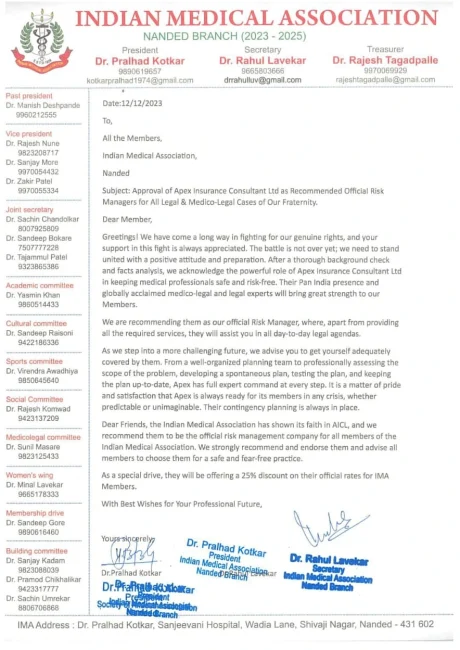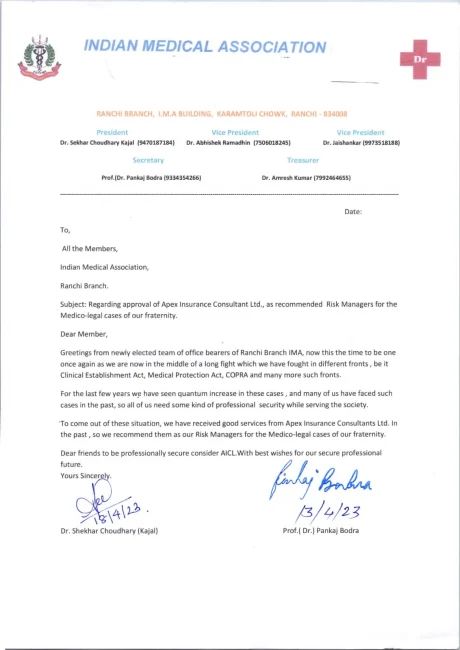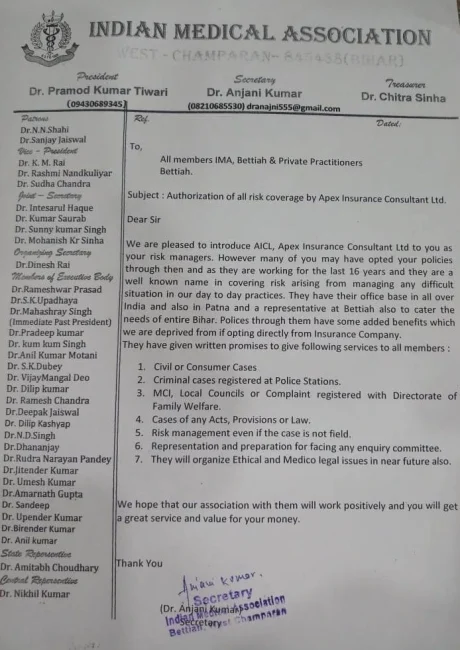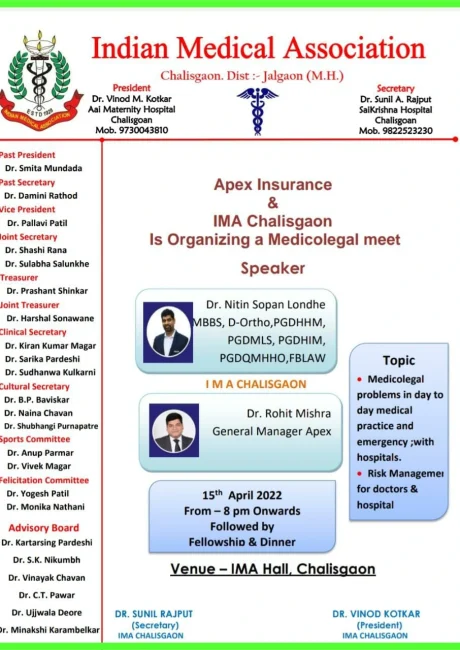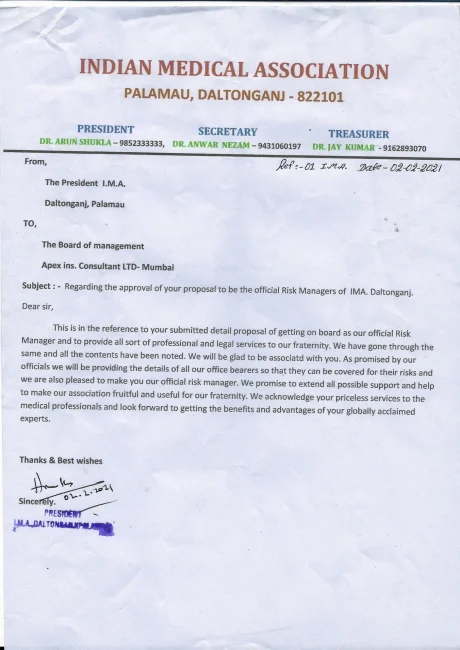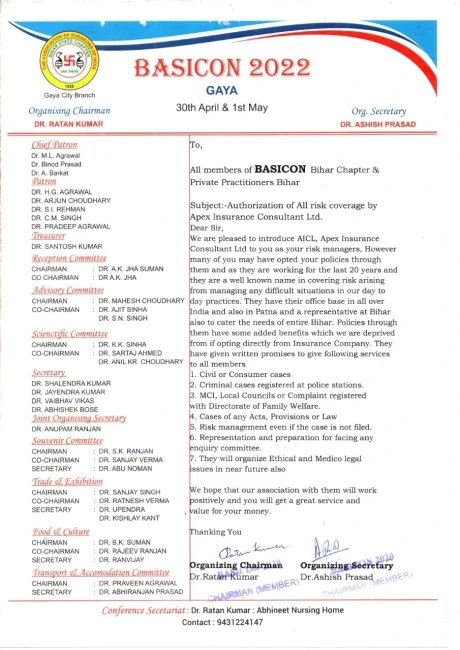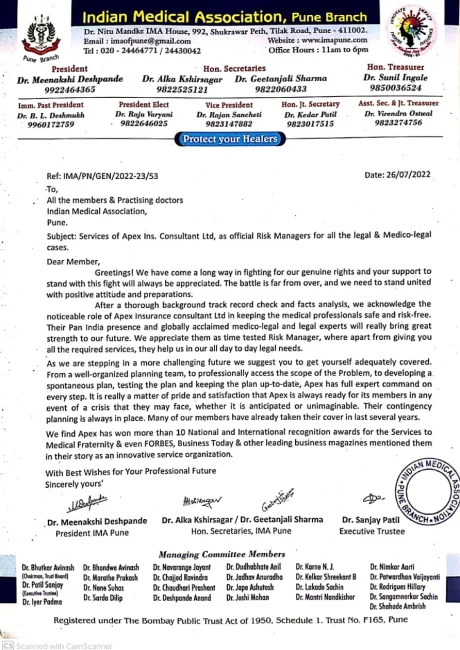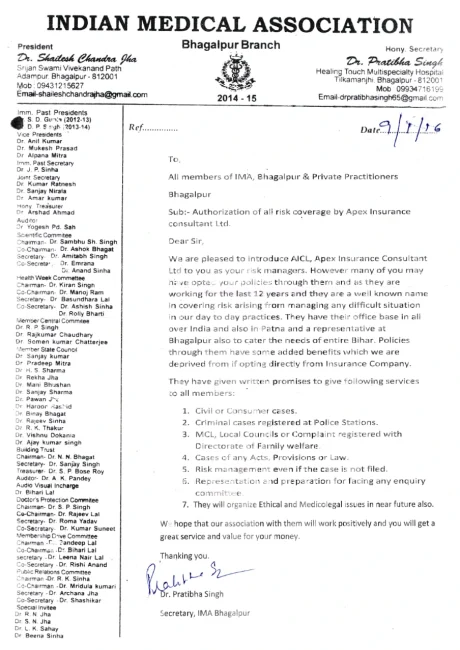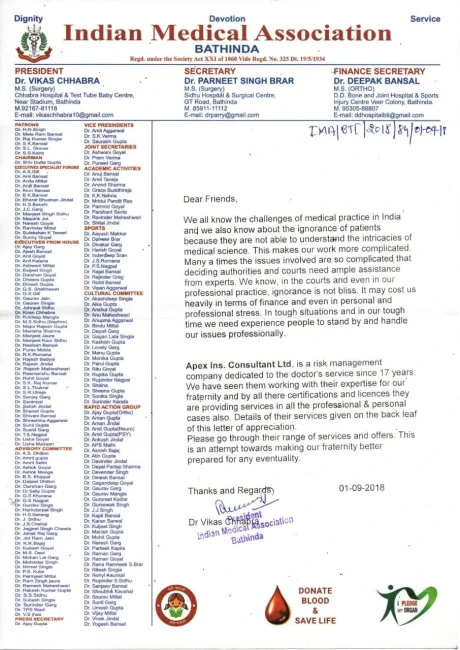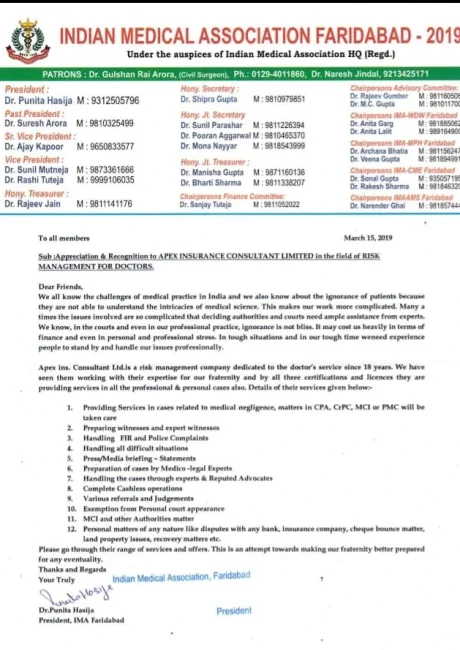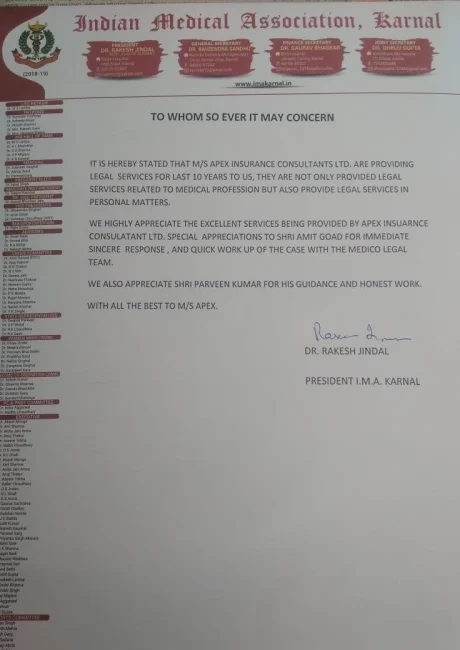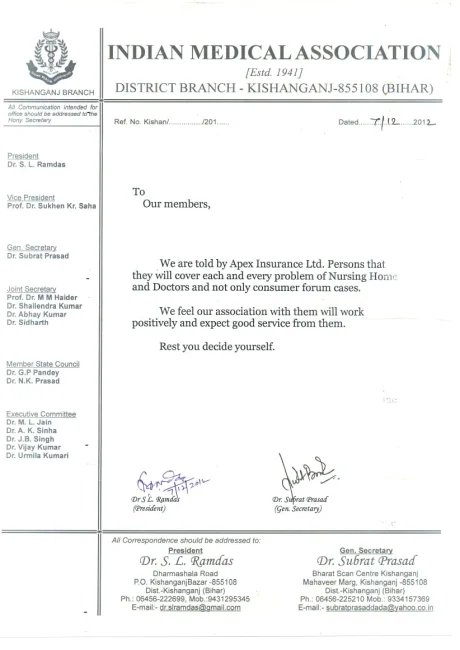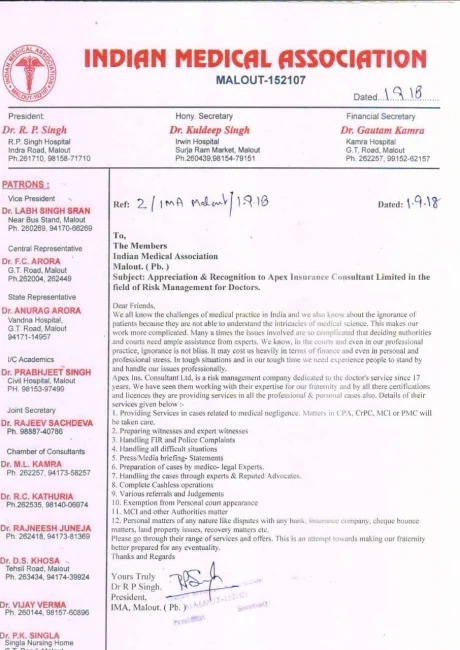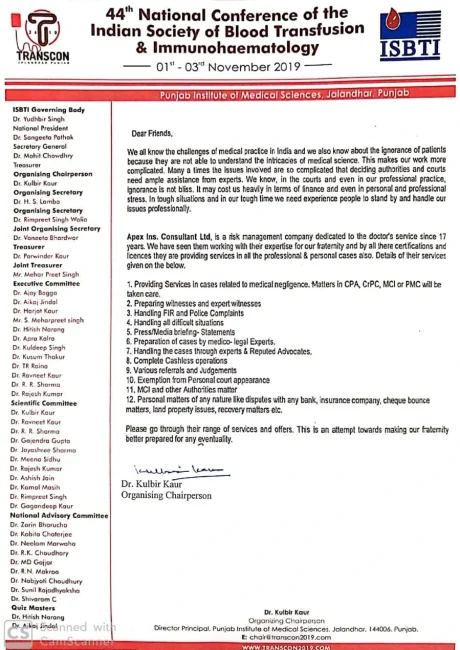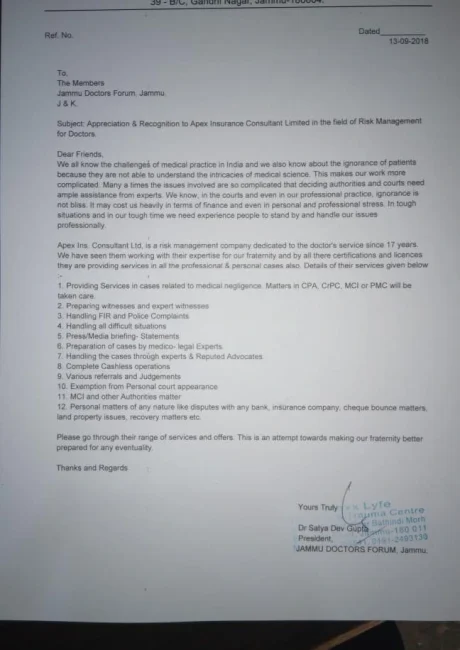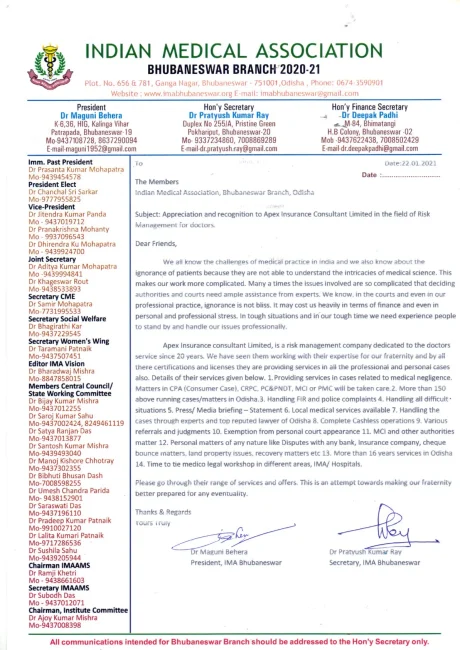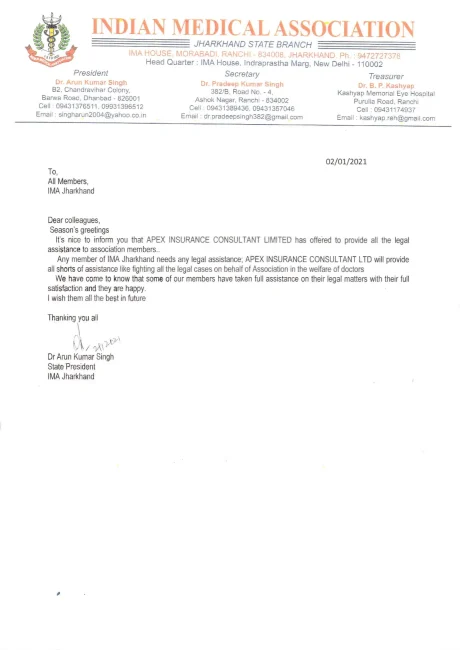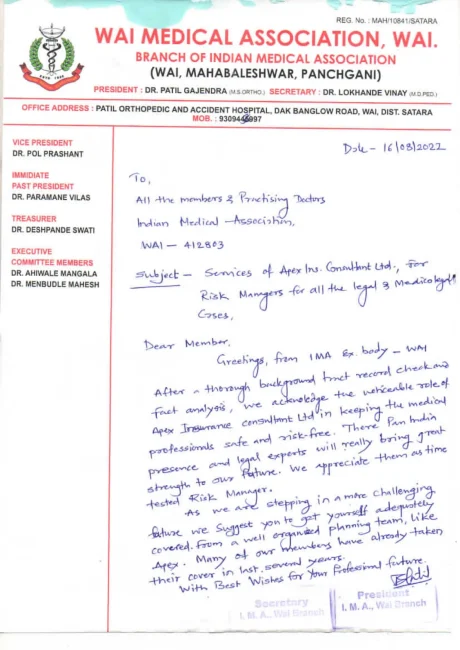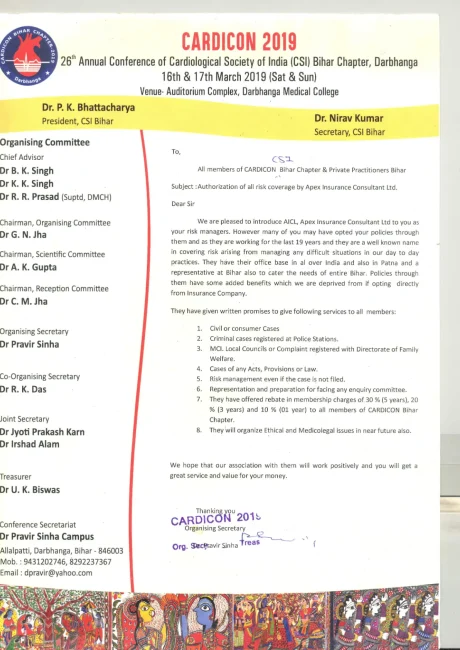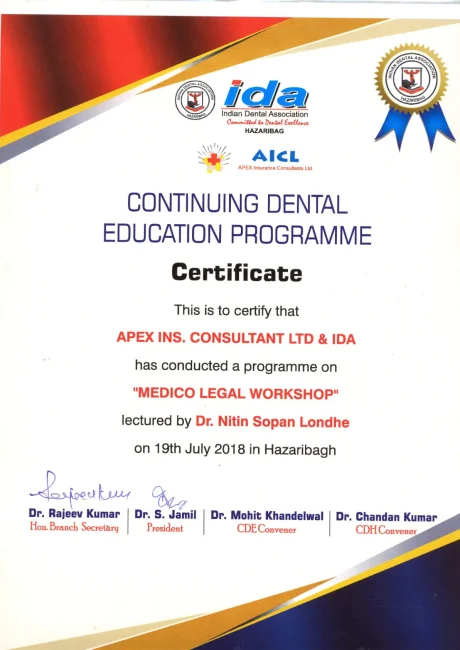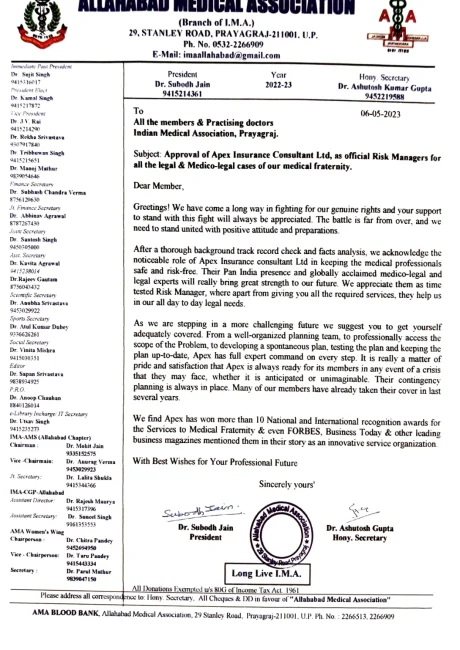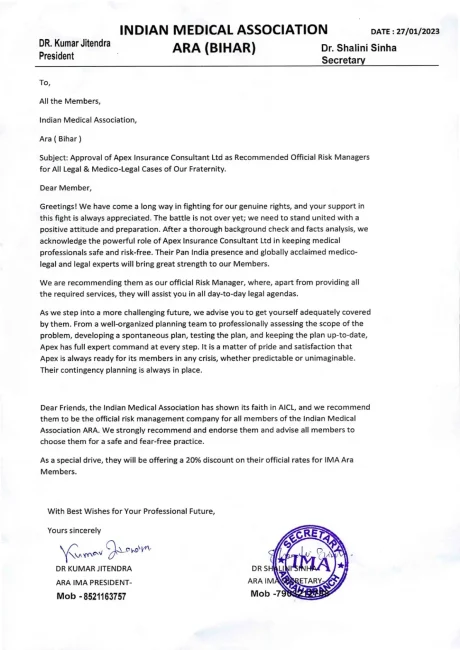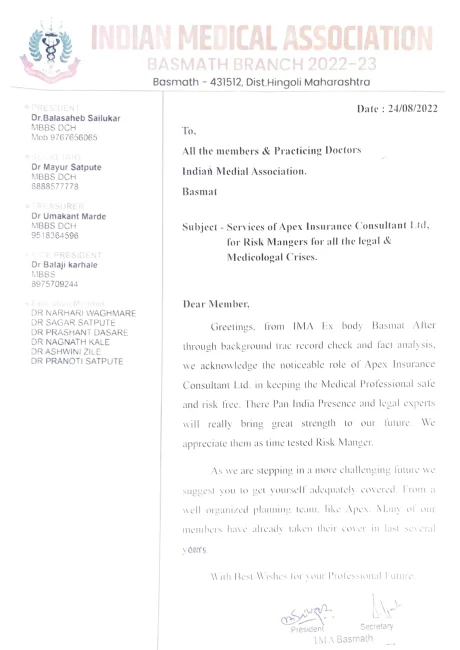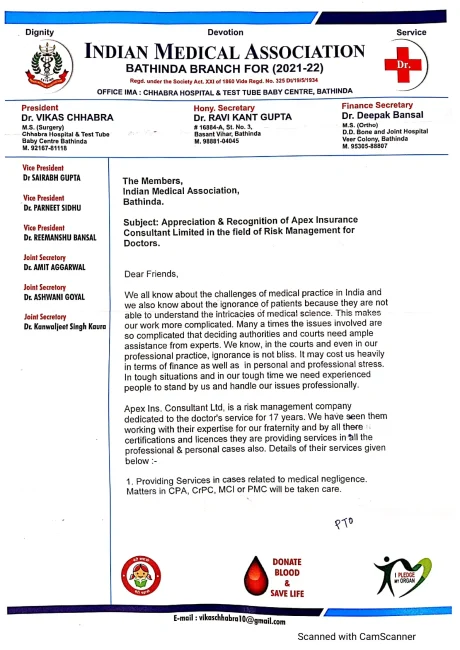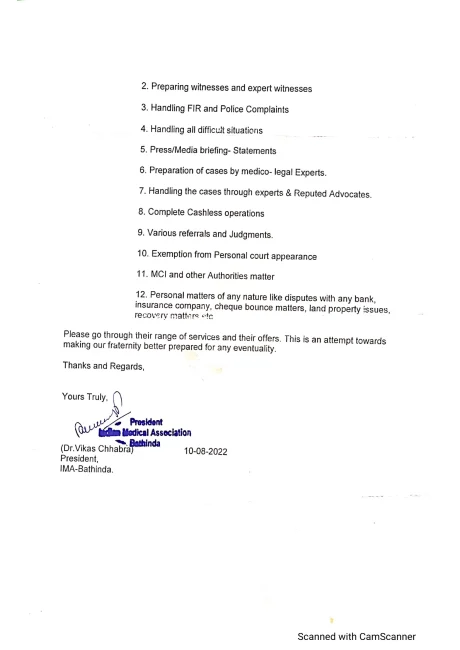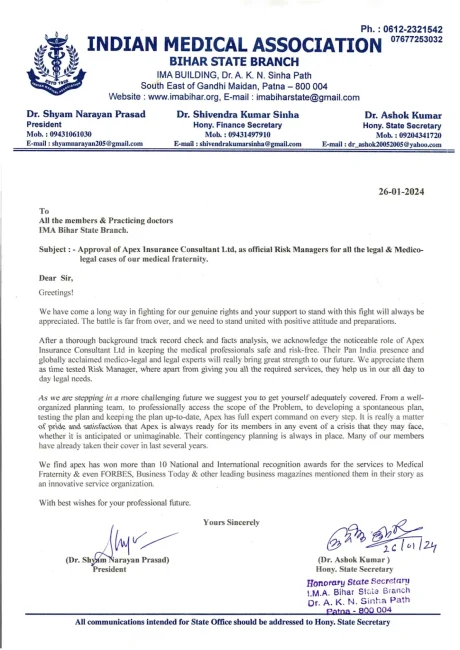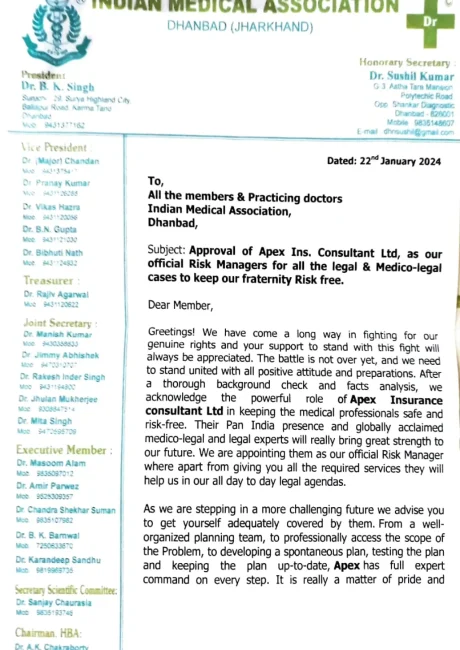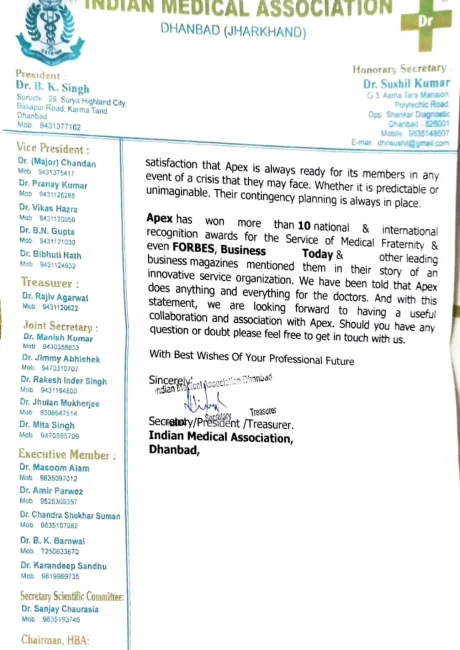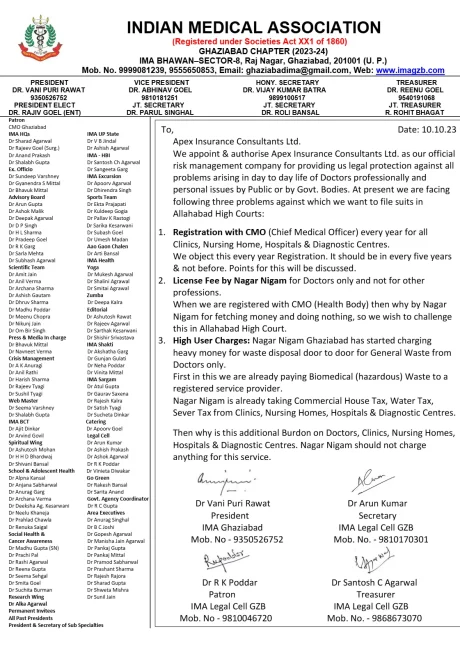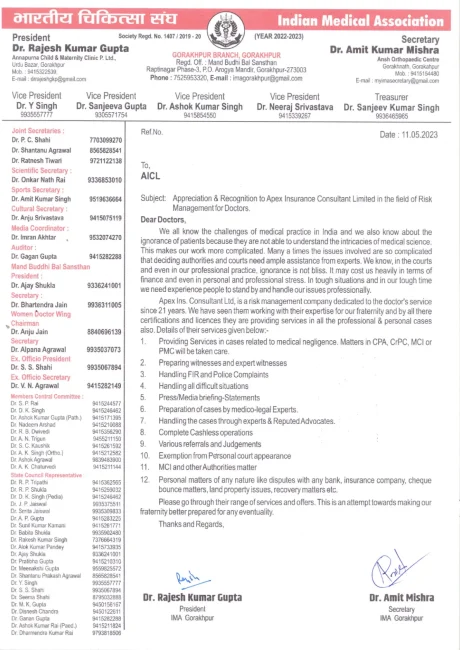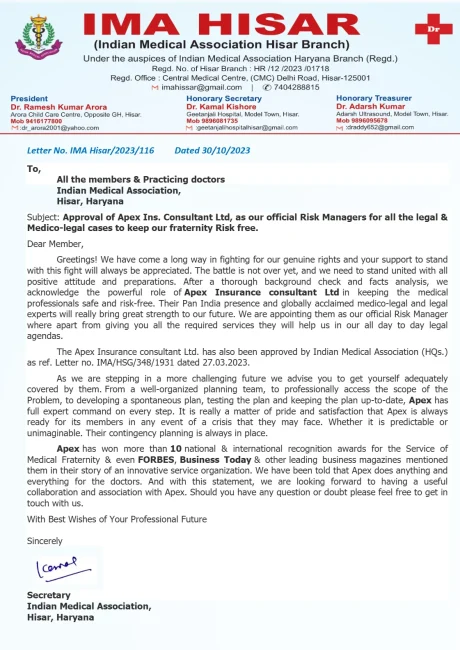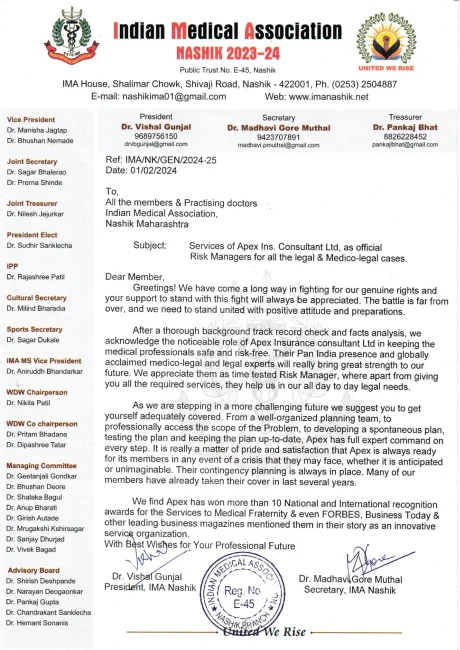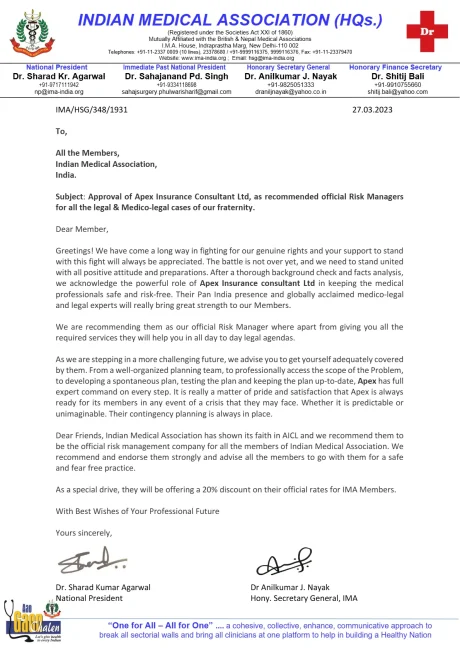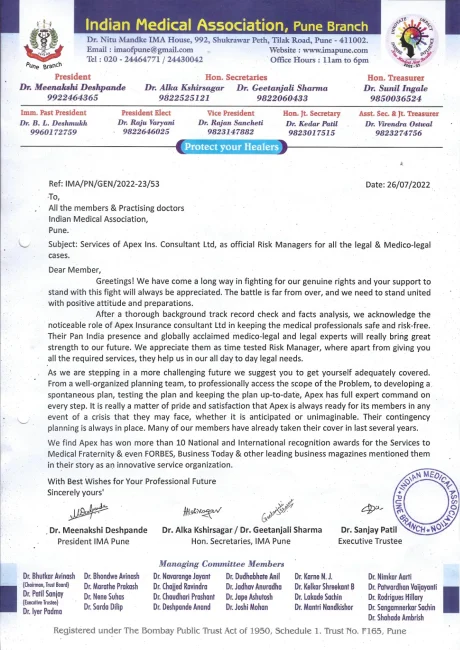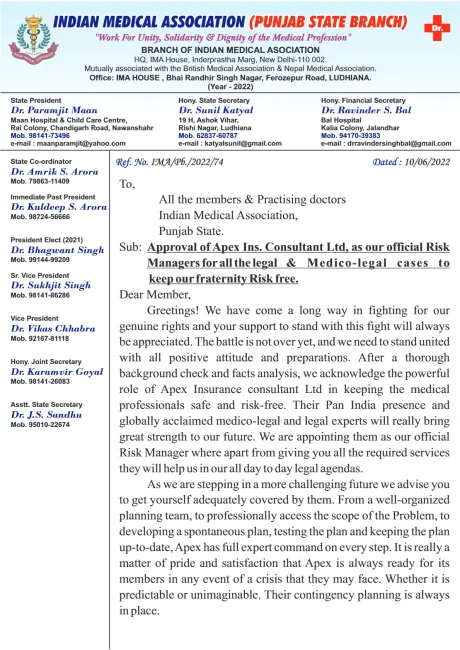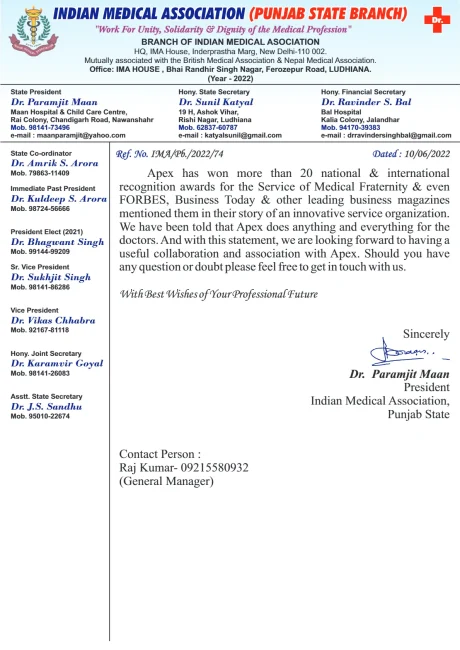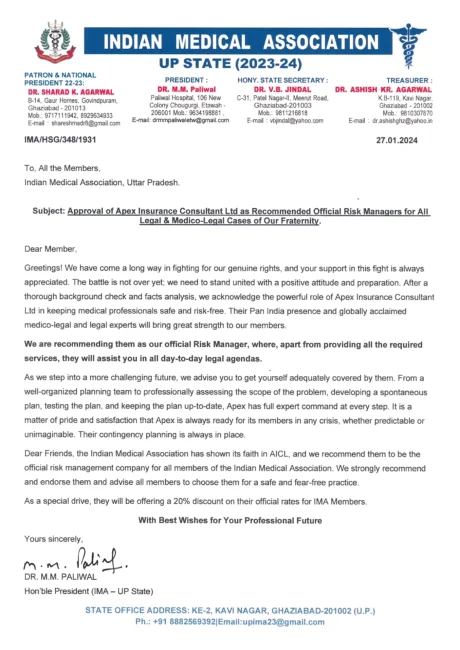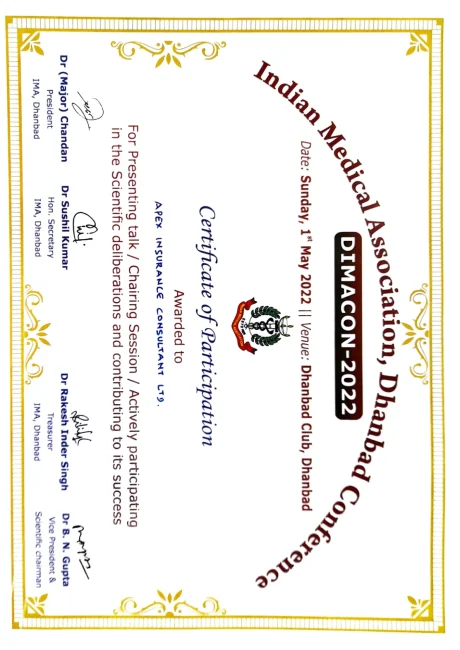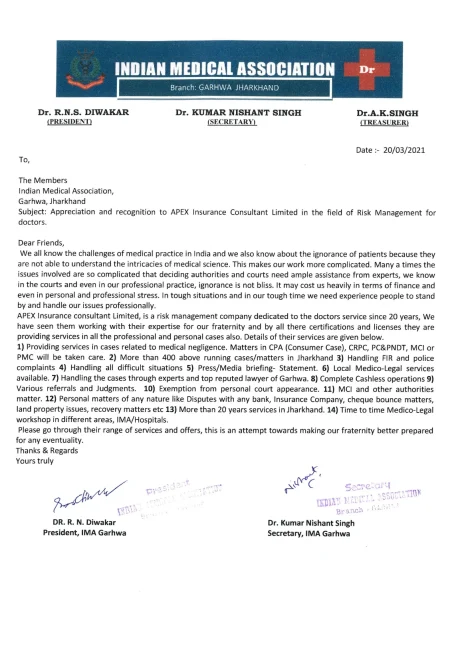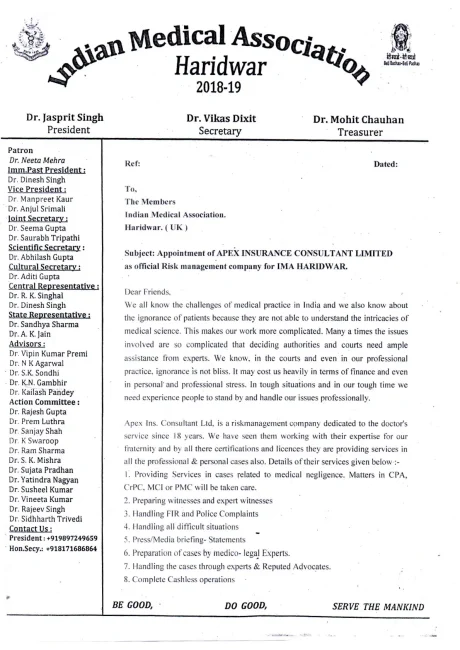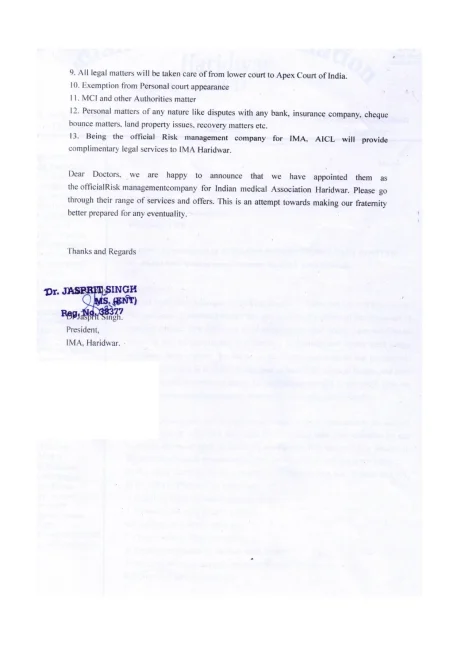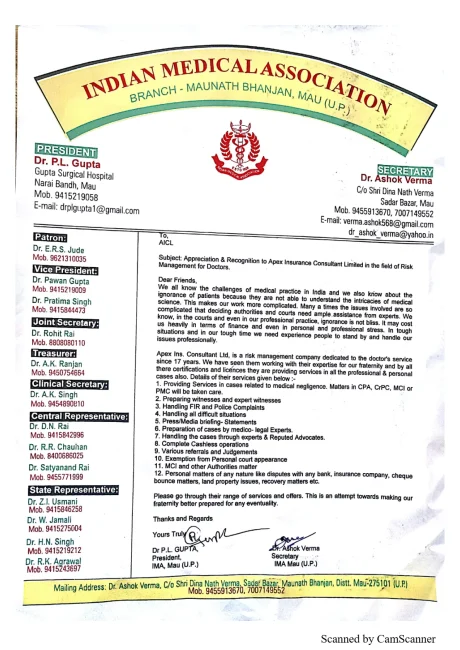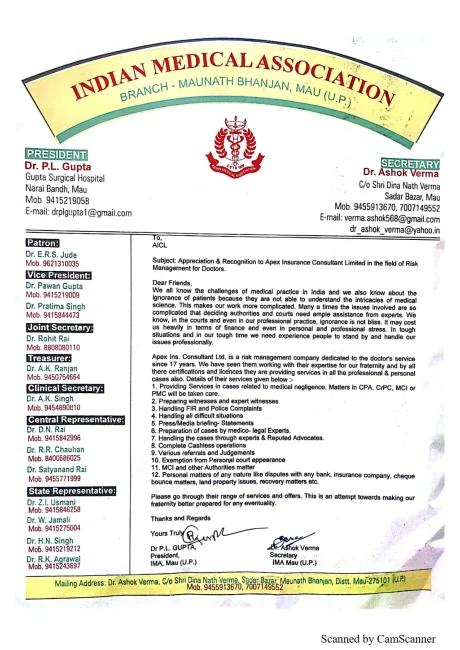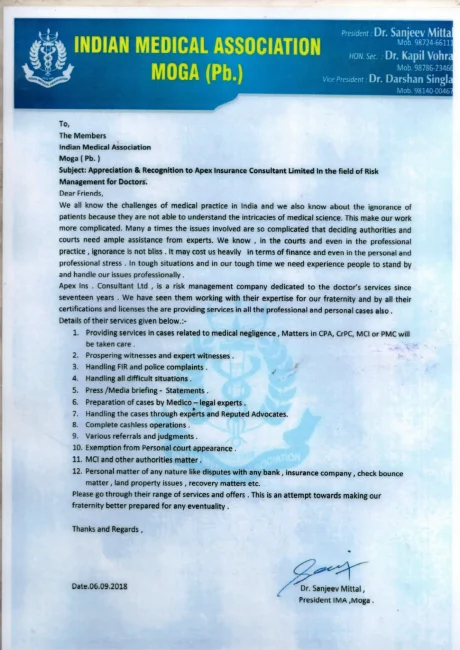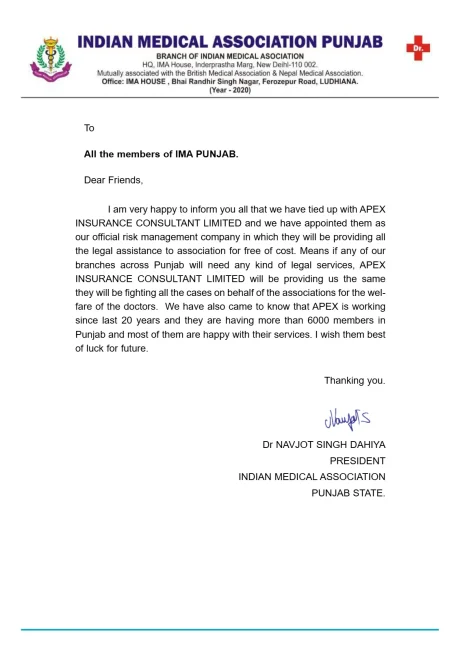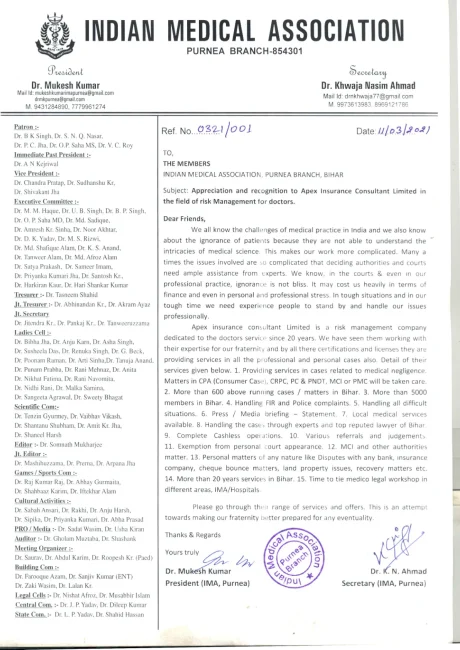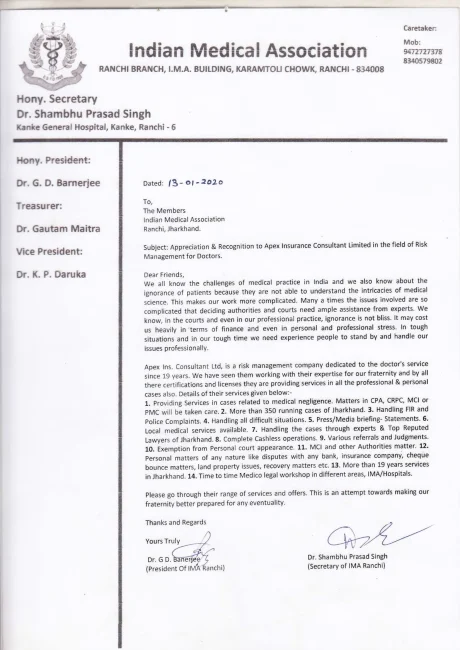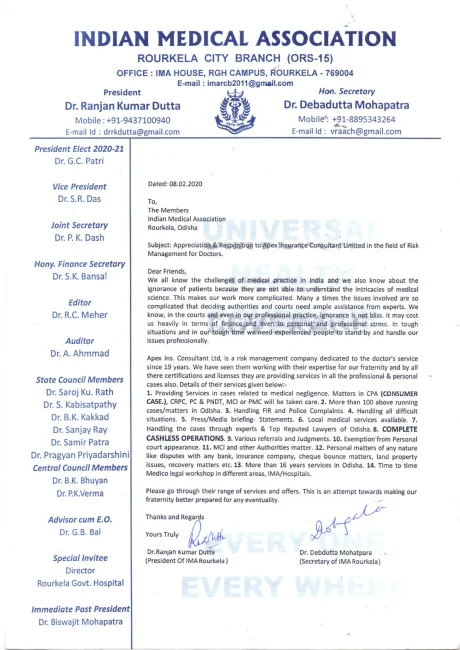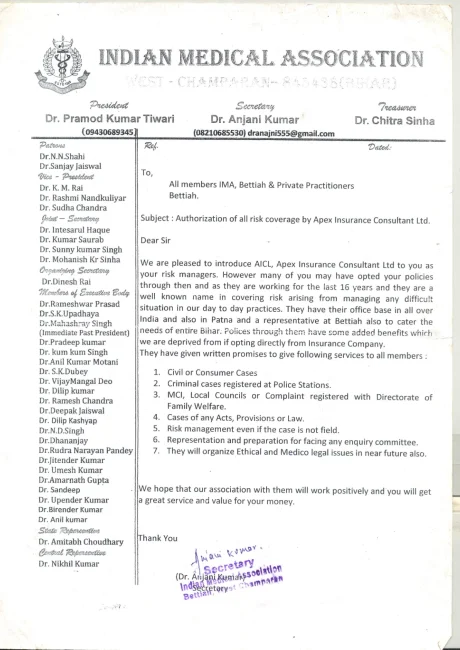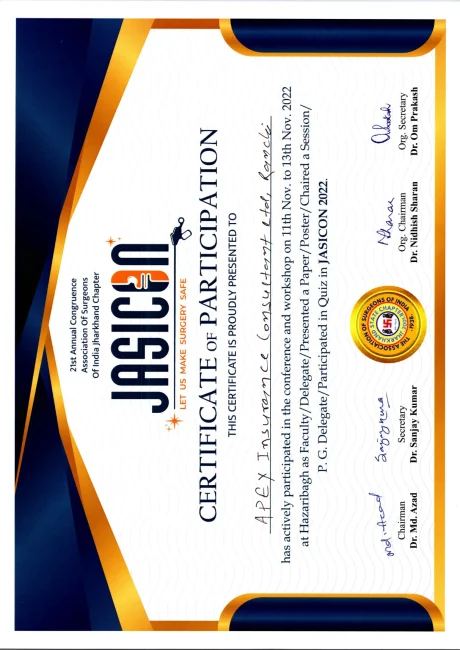By,
1. Dr. (Prof.) Mahesh Baldwa,
M.D, D.C.H, FIAP, MBA, LL.B, LL.M, PhD (law)
Senior Pediatrician & Medicolegal Advisor
Formerly Assistant Professor of Pediatrics at T.N. Medical College and Nair Hospital, Mumbai-8
Ex. Asst. Professor JJ Hosp, Grant Medical College
Ex. Professor, paper setter & examiner of law to postgraduate students of University Department of Law, University of Mumbai
Baldwa Om Hospital, Sumer Nagar, S.V. Road, Borivali (West) Mumbai 400 092
2. Dr. SushilaBaldwa, MBBS, MD Consultant, Baldwa Om Hospital, Borivali West, Mumbai
3. Dr. Namita Padvi, MBBS, MD, DNB, PGDML, Emirates Hospital Dubai
4. Dr. Varsha Baldwa, MBBS, MD, PGDML, Government Medical College, Kota, Rajasthan
Introduction
Death, which we all wish to be peaceful, but has become artificial, away from the family surrounded by the paraphernalia of modern ICU. Legally active euthanasia is crime and passive euthanasia-conditionally permitted. Institutions can draw protocols/guidelines, for not starting and stopping/withholding resuscitation as per SC guidelines in Aruna Shabaug case. Prolonged and futile life support puts economic strain. We suggest clubbing all End-Of-Life-Situation (EOLS) patients in specially designated as EOLS-ICU for increasing efficiency of usual ICU. Parents/relatives will allow pediatricians to administer Passive Euthanasia protocol ethically, legally and psychologically in EOLS-ICU since other patients in EOLS-ICU are in similar situation.
Debate is going on to differentiate between EOLD, DNR, LW and euthanasia
Public opinion is invited by government on the issue of Difference between End of life situation, do not resuscitate, living will and euthanasia to help guide to differentiate and legislate proper law.
Technical advance has made life possible even when it is not worth enjoying for newborn
Usual mission of pediatricians is to support potential chance of living. There is no doubt intensive care unit (ICU) saves many newborn/child lives. At the same time occurrence of death is every day affair in ICU. In some critically ill, the life-support interventions have not helped to mitigate suffering but have added the agony and burden of prolonged dying process and costs. Pediatrician’s withholding/withdrawing or attenuating aggressive treatment may cause acceleration/hastening of death, not initiating resuscitation in newborn may cause loss of chance of making a child survive. Worse, child may not die, living with anoxic damage. Legally all this may fall either in the domain of euthanasia or negligence. Therefore, pediatricians need to evolve legally safe and effective strategies, circumstances to guide their conduct to avoid litigation.
Frustration of nurturing defective/damaged newborn/child:
“Whether the baby will be damaged if it is resuscitated and survives?” is often asked by parents/relatives of such newborn/child. So often the concern of parents/relatives may not be whether resuscitation will be successful or not but whether, if it is successful, the infant will be severely damaged. More and more parents/relatives are becoming intolerant to putting up with defective baby because of the norm of nurturing one or two children at the most. This norm frustrates parents/relatives from nurturing and spending on damaged newborn/child.
Respect parents/relative’s autonomy for initiation, continuation of resuscitation
Pediatricians should inform benefits and burdens of resuscitation and avoid influencing parents/relatives by imposing their own wish. Parents/relatives documented consent is mandatory for initiation, continuing resuscitationandfurther medical management. Pediatricians should avoid invading parental authority and when in doubt obtain court order since legally it is practicing euthanasia.
Pediatricians to promote parents/relatives to take their own decisions regarding ‘resuscitation’ and avoid imposing own decisions to avoid litigation:
Parents/relatives while discussing about ‘resuscitation’ of unsalvageable defective newborn/child leave decisions to pediatrician’s discretion saying, ‘you know the best interest of baby’.
- Two scenarios may emerge. [i] Pediatrician decides not initiating resuscitation. Such un-resuscitated newborn/child may not die and survives with more than expected anoxic brain damage along with existing defects. Newborn/child living in this manner may have worst outcome due to the consequences of hypoxic/ischemic encephalopathy, irreversible coma, and multisystem organ injury, later Permanent vegetative state (PVS). No advanced care at a later stage can substitute for effective resuscitation at birth and repair the damage due to delayed or incorrect procedures. In case of dispute pediatrician may be charged of negligence/practicing euthanasia. [ii] On the other side pediatrician decides to start resuscitation and continues. This leaves one with short term challenge of making newborn/child survive, with long-term commitment to rehabilitate for defects at ongoing expenses (Doyal L, Wilsher D: Towards guidelines for withholding and withdrawal of life prolonging treatment in neonatal medicine. Arch Dis Child 1994;70:F66-F70)
Therefore, lesson to learn is not to invade parental authority unless it is lifesaving dire emergency. But if you do invade parental authority and don’t initiate or withhold/withdraw life support then be prepared to legally defend yourself in court under IPC, Sections 76 (legal mistake of fact), SECTION 81(non-intentional harm done to avert bigger danger), and SECTION 88 (good faith) and even by latest supreme court judgment of Aruna Shanbaug.
If pediatrician is forced to do onerous job of deciding about ‘resuscitation’ strategy and the newborn/child dies or lives with defects. In rare case parents/relatives emotions running amok to blame pediatricians for [i] morbidity (IPC337-338) and [ii] mortality (IPC304A) by complaining to police or consumer courts (Section 12). Though not common, most scaring is mob violence. Therefore, pediatrician should undertake to make [i] good doctor patient relationship, [ii] good communication along with [iii] transparent documentation of medical notes about medical care and [iv] monitoring infrastructure, and obtain [v] written informed consent to show documented diligence, prudence and cautions taken in treating newborn/child to save one from unreasonable legal troubles.
Legally facts and circumstances say it is euthanasia/negligence?
As long as there is potential for life resulting leading to survival, pediatricians shall strive hard to explore this possibility of making them survive. Sometimes burdens of damage outweigh benefits. Continuing survival is futile because of poor quality of life later or the effort may be just a prolongation of dying process. Under these facts and circumstances decisions of withholding/withdrawing or attenuating aggressive treatment may cause acceleration of death of such newborn/child, which legally falls in domain of euthanasia/negligence and that is the reason pediatricians need to evolve legally safe and effective strategies to guide their conduct. Sometimes the newborn is known to have short survival inspite of resuscitation and once resuscitated is started, it may be difficult to stop. Therefore, decisions like not to resuscitate a new born become crucial and important from point of view of legality involved in alleged passive euthanasia/negligence.
Euthanasia: existing legal framework and 2011 SC judgment
- Article 21 of the Constitution of India guarantees ‘Protection of life. The right to die with dignity and to refuse treatment, withhold or withdraw life support comes in conflict and derogation of Article 21. [The Constitution of India, PART III, Right to Freedom: Article 21]
- Euthanasia (from Greek: eu:”good” thanatos: death), mercy death. Physician assisted suicide is abetment of suicide, equated with active euthanasia, which is criminal offence under section 306 Indian Penal Code [IPC]). Active Euthanasia (physician assisted suicide) in very specific cases, under very specific circumstances is legal only in Netherlands, Belgium and three states of USA viz; Oregon, Washington and Montana. [Aruna Ramchandra Shanbaug versus Union of India and others, In the Supreme Court of India, Criminal Original Jurisdiction, Writ Petition (Criminal) No. 115 OF 2009 decided by Justice Markandey Katju and justice Gyan Sudha Misra’s bench on March 07, 2011]
- Two judges bench of the SC in the case of P. Rathinam [Supreme Court Judgments in: P. Rathinum versus Union of India 1994 (3) SCC 394.]
- held section 309 of IPC [Indian Penal Code, Act No. 45 of Year 1860: Sections 32, 76; 81; 88,299,304,306,309]
- as violative of the individual’s fundamental rights under Constitution of India. This was overruled in Gian Kaur case [Gian Kaur versus State of Punjab 1996 (2) SCC 648] by larger Bench of SC, which said refusal of any modality of treatment including life support is not an act of suicide or an attempt at suicide. Therefore, passive euthanasia is no longer a crime.
- Ethics, 2002, rule 6.7 [The Indian Medical Council (Professional conduct, Etiquette and Ethics) Regulations, 2002, rules, 6 and 8] says practicing euthanasia shall constitute unethical conduct. However, on specific occasion, the question of withdrawing supporting devices to sustain cardio-pulmonary function even after brain death shall be decided by team of doctors. Violation of ethics 2002 can lead to suspension of licence under rule 8.3 which permits euthanasia for brain stem dead as envisaged undersection 3 [6] ofHOTA 1994. [The Human organ transplant Act No. 42 of dated 8th July 1994, Section 6]
- Recent,2011, SC judgment on passive euthanasia in Aruna Shanbaug:
In India active euthanasia is illegal and a crime under section 302 or at least section 304 IPC. Physicians assisted suicide is a crime under section 306 IPC. Passive euthanasia is legal even without legislation provided certain conditions and safeguards are maintained. Pediatricians’ effort and energy is extendedto preserve life. Nevertheless, circumstances sometimesarise based on medical facts, wherein the best course may be to withhold/withdrawlife-sustaining medical treatment suchas mechanical ventilation or artificial nutrition and hydration,and surgical procedures, based on poor prognosis.
Is it legal to Withhold/withdraw life support therapy where it is futile to continue?
- Level of care for newborn/child is progressively improving asyears pass by and it is has become a reality for very low birth weight, asphyxiated and newborn/child with gross defects survives. Until some years back in past, many of these newborn/children inevitably died early. Now pediatricians can prolong their life, but with handicaps in many cases. A debate has cropped around the globe, whether it is ethical to withhold/withdraw therapy, sometimes in an active way, allowing newborn/child, (presumed to unable to lead a normal of quality life) to die. [Chiswick M: Parents and end of life decisions in neonatal practice. Arch Dis Child Fetal Neonatal Ed 2001;85: F1-F3]
- Legality depends upon facts and circumstances of each case shall decide whether to initiate resuscitation or not, once resuscitation is stared, when to withdraw or stop/withhold resuscitation in case of futility to continue.
Once begun, Withdrawing and Withholding difficult:
There are varied legal, ethical, moral, religious, social, economic and psychological barriers to withdrawinga treatment in progress and withholding it. Some medical persons and parents/relatives might have more difficulty in stopping therapy once it has begun and makes situation litigation prone.
Who should decide about discontinuing life support system since it amounts to passive euthanasia.
SC in Aruna Shanbaug’s case said decision regarding discontinuing life support system in conducting passive euthanasia had to be taken either by the parents/relatives or in the absence of any of them; such a decision could be taken even by a person or a body of persons acting as a next friend including doctors attending the patient. They will have to apply to high court for discontinuing life support system.
The top court has prescribed a procedure, so that it cannot be abused. Under it high courts will rely on the opinion of independent panels of doctors and parents/relatives before ruling whether doctors can withdraw life support. This arrangement shall be in force till proper legislation comes to regulate active and passive euthanasia. Similar Law Commission’s report is pending before government for enacting law on euthanasia. [Law Commission of India,196th Report on Medical Treatment to Terminally Ill Patients (Protection of Patients and Medical Practitioners), March 2006]
For legal safety inform about optimum duration of ‘resuscitation’ after birth without results:
Pediatrician should inform parents/relatives to allow stopping resuscitation if the heart rate is undetectable and remains so for 10 minutes after birth, because both survival and quality of survival deteriorate precipitously by this time. Birth asphyxia causing brain damage, and its severity, becomes progressively more as time elapses beyond 10 minutes. If parents/relatives decide to withdraw/withhold resuscitation, care should be taken to make baby’s end-of-life situation comfortable and provide much needed psychological support to parents/relatives and to avoid litigation. [Jain L, Ferre C, Vidyasagar D, Nath S, Sheftel D. Cardiopulmonary resuscitation of apparently stillborn infants: survival and long-term outcome. J Pediatr 1991;118:778-82.]
Legally how much parents/relatives should know regarding unsalvageable newborn/child regarding DNR
Resuscitation is not indicated in Birth weight ≤ 400 g, anencephaly, Trisomy 13 and 18 since it is associated with almost certain early death and/or unacceptably high morbidity. Sometimes parents/relatives may file a case for not resuscitating with police station under IPC section 304-A saying death is caused by negligent “act” (IPC SECTION 32 says “acts” include illegal omissions also). Pediatricians can defend by saying that there is no legal obligation to resuscitate unsalvageable newborn/child, which is amply made clear in Aruna Shanbaug’s SC judgement. [Stevenson DK, Goldworth A: Ethical dilemmas in the delivery room. Semin Perinat 1998;22(3):198-206]
Potential legal problems may brew up by unnoticed Passive euthanasia:
When payment is done by parents/relatives for ICU patient then two situations of acceleration of dying by passive euthanasia occur:
- Slow attenuation of aggressive life support interventions may result due to failure to provide required medicines daily by parents/relatives causing acceleration of dying process.
- Or else sometimes parents/relatives insist for discharge against medical advice (DAMA) or ask transfer, but do not take to other medical centre. Patient is taken home hastening death.
Passive euthanasia by accident / negligence:
- Infrastructure needed for resuscitation may fail e.g. oxygen not available [Spring Meadows Hospital & another versus Harjot Ahluwalia (through K.S. Ahluwalia) & another, 1998(3)CPR1(SC):1998(I)CPJ1:JTI998(2)SC620], oxygen getting exhausted / empty cylinder [ Jacob Mathew (dr.) Vs State of Punjab & another, III (2005) CPJ 9 (SC) Supreme Court of India. ]
- oxygen tubes getting disconnected accidentally may cause acceleration of death.
- Failure to raise alarm by monitoring system leading to failure to take proper remedial action causing acceleration of death.
We suggest Coining a term like “end-of-life care situation” (EOLS) and designate ICU for “end-of-life care situation”. This increases efficiency of usual ICU’s and reduces legalities and litigation:
EOLS circumstances areextreme prematurity, severe congenital anomaly,imminent death regardless of treatment, evidence of profoundneurologic injury, irreversible coma, PVS or life not worth salvaging further. Such patients impede normal work of usual ICU because of legalities involved. Protocols/Guidelines to withhold/withdraw life support interventions for EOLS based on SC decision in Aruna Shanbaug case for passive euthanasia are evolving to get formulated. Execution of Protocols/Guidelines may be time consuming procedure since it is mandatory to obtain high court permission. We suggest designating ICU for ‘EOLS’ (EOLS-ICU) to care for such EOLS patient, increasing efficiency of usual ICU. Thus newborn/child requiring EOLS shall not hinder medical care of others. It may be easy for parents/relatives to accept and allow pediatricians to administer successfully a passive euthanasia Protocols/Guidelines ethically, legally and psychologically in EOLS-ICU, where even other patients are in similar situation. This will reduce psychological trauma to parents/relatives and reduce cost of care for futile life support interventions and speed up legal procedures and reduce litigations.
Does and don’ts
- Document in transparent manner
- Informed consent of parents/relatives for ‘do not resuscitate’ and ‘withhold/withdrawal of life support’ based on institutional protocol as per 2011 Supreme Court judgment of Aurna Shanbaug and apply to high court. It should include
- Full disclosure about futility to resuscitate newborn/child or continue resuscitation thus discontinuing life support, where there are ‘no prospects of living’, irreversible coma or Permanent Vegetative State and situations where damaged /defective child considered burden by parents/relatives.
- This is because medical actions of ‘do not resuscitate’ and ‘withhold/withdrawal of life support’ may be termed as euthanasia/negligence.

